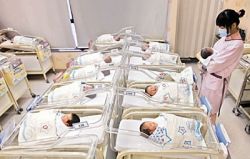Shuangfei children
The term Shuangfei children (双非儿童) was invented by the Hong Kong media. It refers to children delivered in Hong Kong by non-local parents, mostly Chinese mainland women. Hong Kong's medical and educational resources face mounting pressure as more mainlanders give birth there.
The Census and Statistics Department of the Hong Kong Special Administrative Region (HKSAR) revealed that the number of three-year-old Shuangfei children has soared from 209 in 2003 to 29,800 in 2012, increasing 41-fold in nine years. According to China News Service, about 95,000 babies were born in Hong Kong in 2011, and approximately 37,000 of them were Shuangfei babies.
According to surveys conducted by the Census and Statistics Department over the past five years, 20 percent of mainland mothers plan to send their children back to study in Hong Kong. The number of Shuangfei children who will study in Hong Kong's kindergartens is estimated at between 1,700 and 6,000 by September 2012, totally about HK$100 million in tuition revenue.
The large number of Shuangfei children has brought tremendous pressure on Hong Kong's educational system, especially in the Hong Kong-Shenzhen boundary area where kindergartens and schools lacked about 3,000 spots for applicants each year. As tax payers, local Hong Kong citizens complain that they have no precedence over mainlanders to enjoy local resources from the government.
On April 16, 2012, Hong Kong's Health Chief York Chow said the region may bar mainland mothers from giving birth in public hospitals next year to battle the overcrowding in local maternity wards. Public hospital obstetric services are expected to be reserved for Hong Kong permanent residents and Hong Kong citizens in 2013, he said.
Chow's comments came after Leung Chun-ying, the newly-elected Chief Executive of the HKSAR, said that private hospitals should bar mainland mothers and that their newborns will no longer be able to claim permanent residence in the city.
